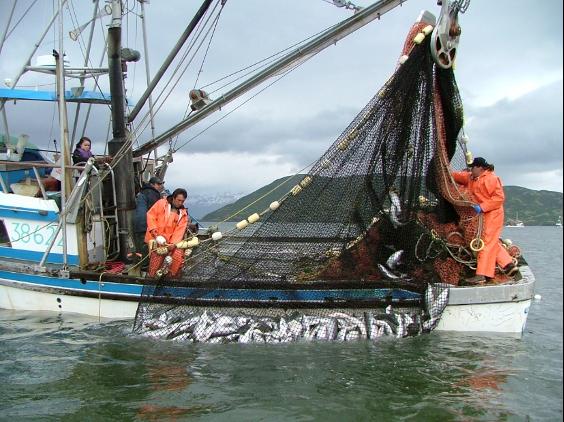Biodiversity seems, naturally, like a good thing but when it comes to fisheries management, it can involve competing trade-offs.

Credit: Credit: Peter Westley.
A new study, by researchers from Simon Fraser University and the Department of Fisheries and Oceans, reveals the trade-offs of fish biodiversity–its costs and benefits to mixed-stock fisheries–and points to a potential way to harness the benefits while avoiding costs to fishery performance.
Many Pacific salmon fisheries catch fish that come from multiple stocks (management units), often representing locally-adapted populations, in so-called mixed-stock fisheries. Fish are intercepted in the ocean as they migrate along the coast, returning to different rivers to spawn.
The study used computer models of hypothetical fisheries and case studies of three actual sockeye salmon fisheries, including BC’s Fraser River fishery, to explore how fish biodiversity within mixed-stock fisheries influences both fishery performance and conservation risks.
“Our paper highlights that biodiversity in fisheries can provide benefits by stabilizing catches from year to year, much like a diverse stock portfolio provides more stable returns to the investor,” says lead researcher on the paper, SFU biological sciences professor Jonathan Moore. “But this comes at the cost of increases in the risk of extinction to individual populations and decreases in the amount that fisheries can harvest without risking long-term sustainability.”
This is because the mixed-stock fisheries are harvesting populations that can have different levels of productivity; some are considered ‘strong,’ with high adult spawner returns and high population growth rates, while others are ‘weak’ and more at risk of being fished to low levels or extinction.
Moore says, “In any given major salmon watershed, like the Fraser, there may be more than a dozen different populations that have different productivities and whose returns vary asynchronous from year to year. This remarkable salmon diversity is challenging for sustainable fisheries management.”
A way forward for mixed-stock fisheries
How then can fisheries be sustainable, in places like the Fraser River, conserving or rebuilding stock diversity while also benefiting from it?
When fisheries can target fish from individual productive stocks while avoiding catching unproductive, weak ones, they can avoid many of the pitfalls of mixed-stock fisheries. This high degree of management control can allow fisheries to maintain high harvest rates while reducing the conservation risks.
“Whether it is the use of genetic stock identification to inform in-season fishery management, or the resurgence of terminal salmon fisheries by First Nations, there are many ways that salmon fisheries could increase their ability to target specific stocks,” says Moore.
When opportunities for increased management control are not available, fishery managers have the difficult task of balancing the need for harvests that support fishers with risks of overfishing weak stocks. Often fishing rates are lowered to reduce conservation risks but this comes with the trade-off of potential missed opportunities for high catches of fish from thriving stocks.
“In situations when there isn’t opportunity for increased management control, there is no single right answer and so it is critical that the nature of the trade-off between mixed-stock harvest and conservation risks be understood, so that decision making is as informed and transparent as possible” says Brendan Connors, Research Scientist at DFO and co-author on the paper.
While the paper focused on highly diverse Pacific salmon fisheries, it has broad implications for mixed-stock fisheries in general, ranging from coastal salmon to open-ocean longlines to bottom-trawl fisheries.
###
Media Contact
Melissa Shaw
[email protected]
Related Journal Article
http://dx.




